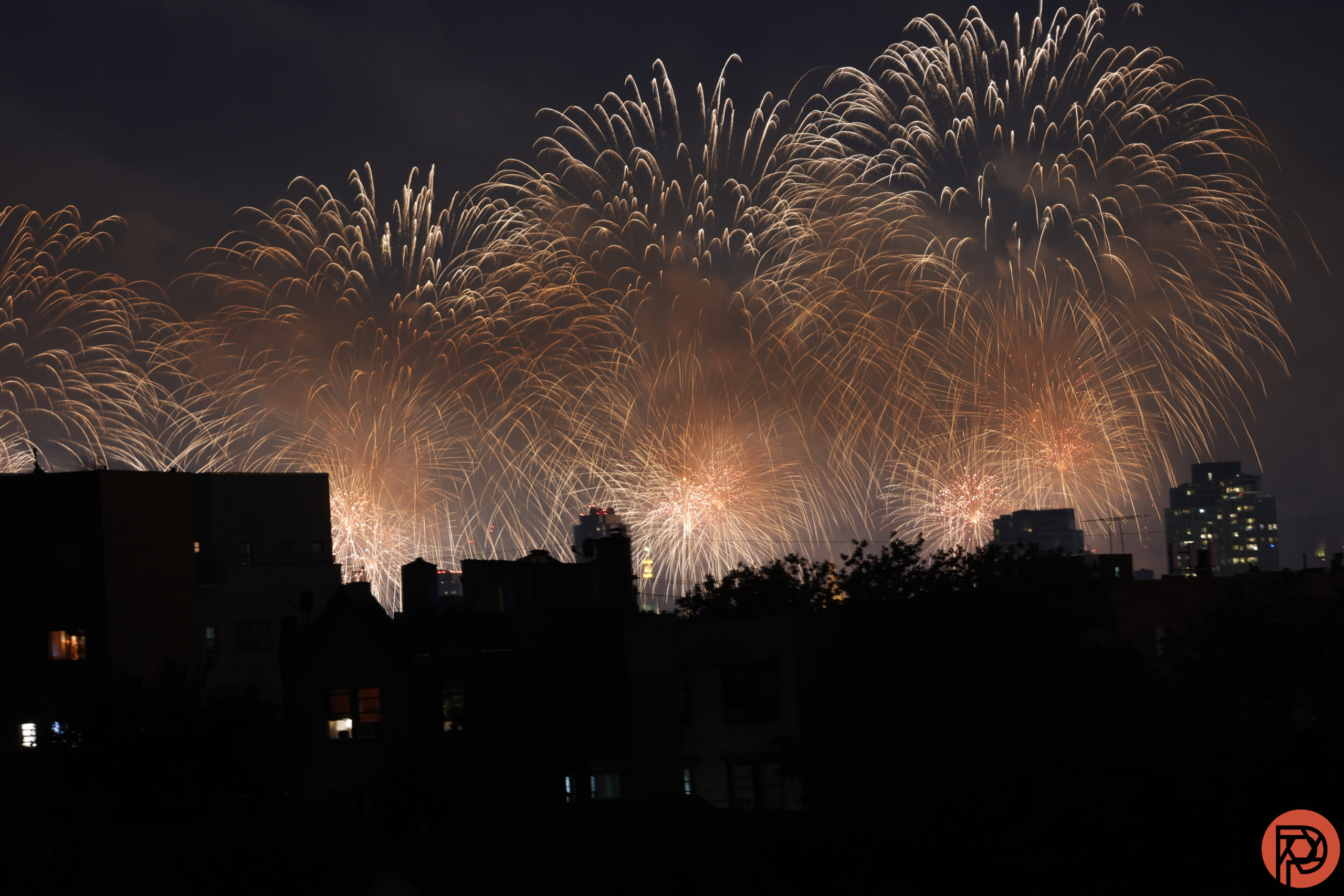Fireworks add spark to landscape photos — pun intended. But fireworks can be among one of the trickier subjects to master. One of the challenges to fireworks photography is timing. Too early, and the burst of light is missing entirely; too late, and that streak heading up to the sky is absent. But there’s a trick to getting perfectly timed fireworks photos. It’s called bulb mode. Here’s how to photograph fireworks using bulb mode.
Table of Contents
What is bulb mode?
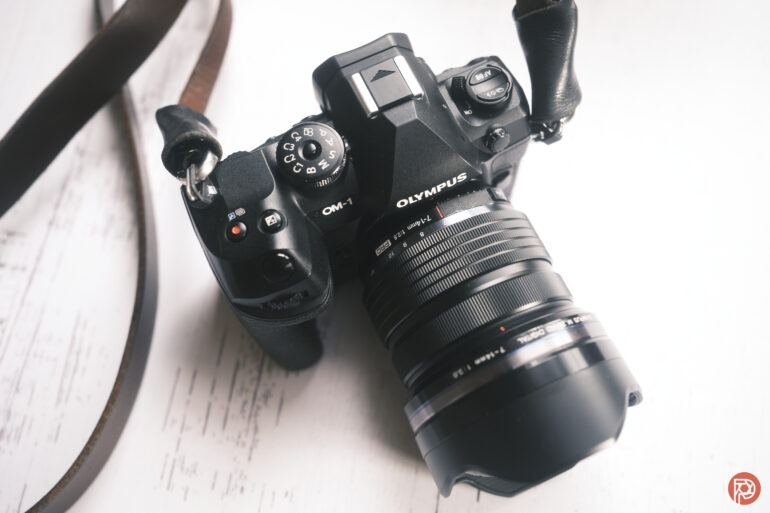
Bulb mode is found among the shutter speed settings. But, unlike a typical shutter speed, bulb mode doesn’t hold the shutter open for a predetermined amount of time. Instead, bulb mode starts the photograph when the shutter release is first pressed — and doesn’t stop the exposure until the shutter release is pressed again. That allows photographers to capture long exposures with unpredictable timing — like fireworks. Press the shutter as the firework is being sent up into the air, and then press again once the burst has faded from the sky. In other words: perfectly timed fireworks photos.
Set up a tripod.
Like most long-exposure images, photographing fireworks requires a tripod. All bulb-mode photographs tend to be longer exposures — and touching the shutter release twice introduces even more blur potential. Scout out your fireworks location, then set up a tripod.
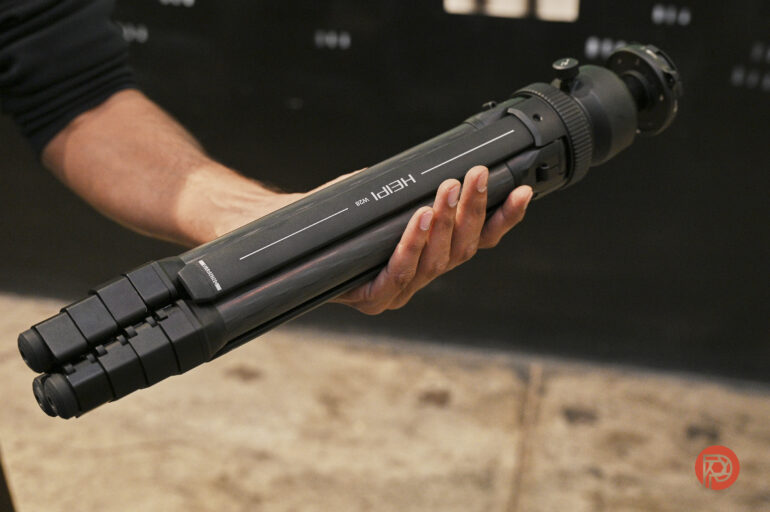
Shoot in RAW.
Set your file type to RAW or RAW + JPEG. RAW files will give you a little more wiggle room if you accidentally over or under-exposed the shot.
Use manual focus.
Autofocus systems won’t work on bursts of light moving rapidly across a dark sky. Like learning how to photograph fireworks with a standard shutter speed, using manual focus is a must. Train your camera on an object or building near where the fireworks are going to be sent off, then set the focus to that point.
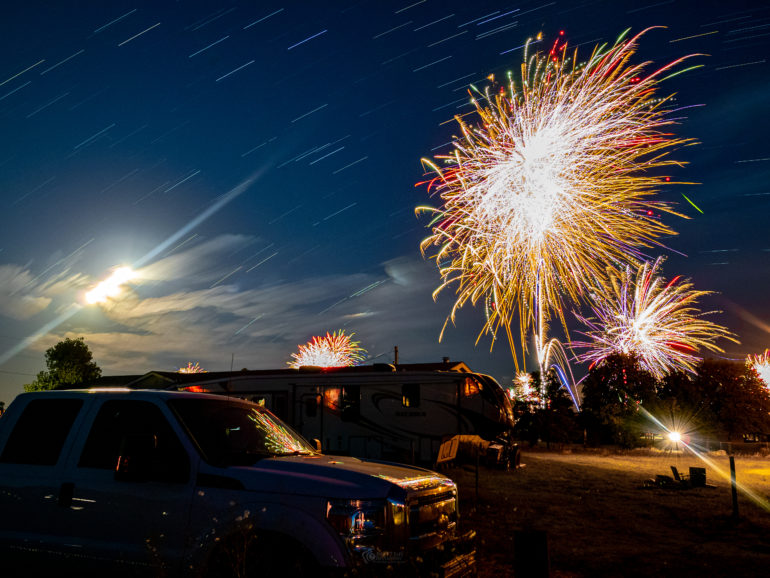
Dial in your aperture and ISO.
Balancing an exposure when you don’t know precisely how long it will be can be tricky. But most fireworks shows are actually plenty bright. Set the aperture around f8 — this keeps more of the landscape scene in focus and increases the odds that you’ll get a sharp shot even with manual focus. Set your ISO to 100. You can increase this later if needed, but the long exposure coupled with the light of the fireworks often means that it’s unnecessary.
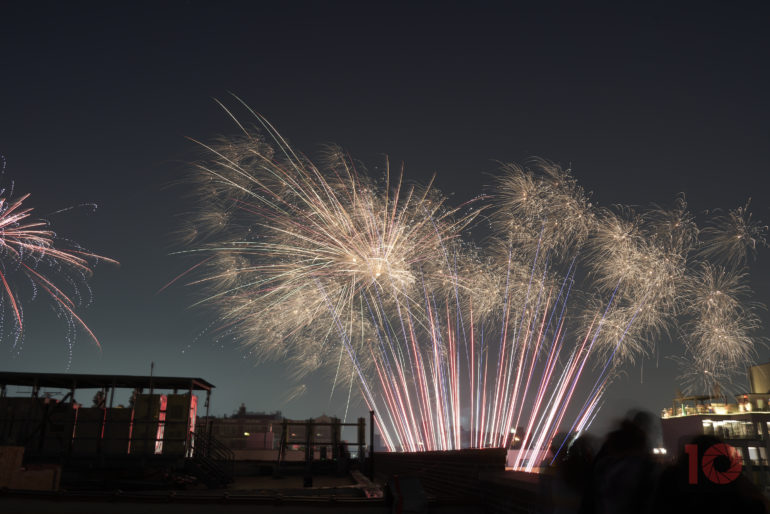
Set your shutter to bulb.
Bulb mode is found among the camera’s shutter speed settings. Turn the shutter speed all the way down, past 30 seconds, until you see B or Bulb.
Start the image as the firework goes up, and finish after the firework has burst.
Press the shutter release as the firework heads up in the sky. Once the sparks have fizzled out, press the shutter release again. This finishes the exposure. To capture two or more fireworks, wait until both fireworks have burst before pressing the shutter release the second time. Fireworks photos are typically anywhere from five seconds to 30 seconds long.
Review and adjust exposure settings as needed.
Getting a perfectly exposed photo with bulb mode is sometimes tricky. Review your photo. If it’s too dark, open up your aperture a bit or leave the exposure open longer to capture more fireworks. If it’s too light, step down your aperture a bit more.
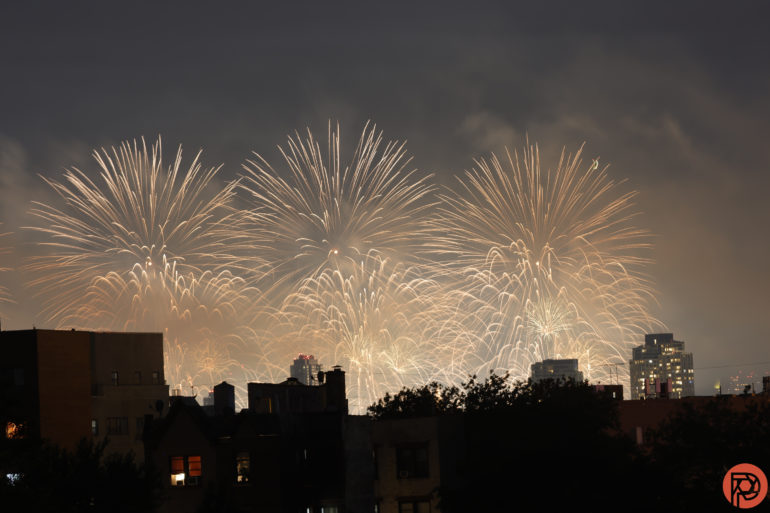
While your total exposure time will vary from shot to shot, the dark sky is more forgiving then attempting to use bulb mode on other subjects. Varying your exposure by a few seconds each time when photographing fireworks will still often lead to great images. When shooting in RAW, you can tweak the exposure later — so some extent.
However, as the fireworks show progresses and heads into its finale, the exposure time typically needs to be shortened. As several fireworks are bursting, the light is often enough to overexpose the shot when using bulb mode. As more fireworks are sent up into the sky, end your exposure a bit earlier. Or, narrow your aperture even further when heading into the fireworks finale. Learning how to photograph fireworks using bulb mode does take some trial and error, but the trick allows photographers to precisely time each shot.


